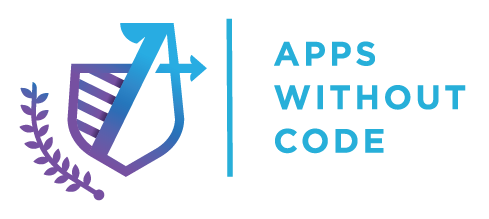The manual search for potential customers
In 2018, Mia Negru co-founded 2030 Builders, a startup that uses innovative digital tools to foster more sustainability in businesses. Their goal is to help companies align with the UN’s Sustainable Development Goals (SDGs) by 2030.
Like many startups, the company faced the challenge of finding and engaging potential customers. Initially, they relied on labor-intensive and manual outreach, making it costly and time-consuming to acquire customers.
“When we started looking for customers, we manually searched through the sustainability reports of Denmark’s top 100 companies, painstakingly extracting contact details such as email addresses, phone numbers, and names of sustainability officers,” Mia said. “We also attended industry events to network with people in sustainability roles and physically tap them on the shoulder.”
But collecting contacts was just the beginning. After gathering data, the next puzzle was what to do with it. “We had to find a way to consolidate that information, then try to figure out who among the people we found online or at events could become potential customers,” Mia explains.
Managing contacts and tracking progress
The next hurdle for the business was nurturing leads effectively from that initial contact to conversion. Despite the team’s best efforts, they relied on Excel spreadsheets to manage contacts and track interactions.
Mia describes where the system fell short: “We tried to categorize individuals into leads, prospects, and potential customers, while also juggling additional details about their respective companies, such as size and employee count. However, the sheer volume of details made it very hard to keep everything organized.”
Without a clear overview, it was tough to maintain consistent communication with leads, risking potential opportunities slipping through the cracks or languishing in the pipeline.
And, Mia adds, collaboration was nonexistent. “How could we effectively collaborate internally to track the progress of these individuals? It posed a significant challenge for our team."
Revolutionizing lead generation and outreach
Upon recommendation from another startup, 2030 Builders opted to try out HubSpot Starter Customer Platform, comprising Marketing Hub, Sales Hub, and Service Hub, providing the team with a comprehensive toolset to expand their business.
With Marketing Hub Starter, 2030 Builders effortlessly creates personalized landing pages and forms that convert website visitors into qualified leads. They use HubSpot’s conversion analytics and visitor behavior insights to continually optimize their strategies.
“This has transformed the way we capture leads at a European and global level,” says Mia. “Now, people are coming to us instead of us having to make big efforts to go to them.”
The company uses Marketing Hub Starter to foster relationships with prospects through newsletters and other email campaigns. HubSpot’s easy-to-use analytics allow the team to identify the most engaged prospects and tailor their communication accordingly, nurturing them all the way to conversion.
“HubSpot has revolutionized outreach towards our customers,” says Mia. “We’re able to deliver differentiated types of communication tailored to different stages of the lead journey, curating messaging to cater for different levels of interest.”
Mia estimates 33% of all revenue generated by the business can be directly attributed to the lead generation and nurturing efforts conducted through HubSpot.
 Image: 2030 Builders team in the office in Denmark.
Image: 2030 Builders team in the office in Denmark.
Improved team alignment leads to increased productivity
Seamless integrations, like HubSpot for WordPress, Gmail, Google Calendar, and LinkedIn Ads, enable 2030 Builders to achieve better alignment and communication.
Previously, a lot of time was dedicated to aligning teams during meetings. But with numerous notifications now alerting teams of progress within the platform, they’ve reduced meeting times and increased overall productivity.
“HubSpot plays a pivotal role in increasing our communication efficiency,” says Mia. “It’s a catalyst for almost silent communication, fostering more transparency among our sales, service, and marketing teams.”
Mia reports that by implementing HubSpot, her marketing team is operating with 20% increased efficiency, and sales efficiency has also seen a 50% boost. These efficiency improvements allow the growing business to dedicate more time to focusing on other strategic priorities.
As co-founder, Mia values the transparency within HubSpot, which allows her to stay informed on every facet of the business.
“Having everything unified and connected means I can oversee tasks in progress, forecast projections, and monitor the performance of team members,” she says.
Mia emphasizes that the HubSpot Starter Customer Platform has been instrumental in saving them a significant amount of time. She projects that without HubSpot, they would have to consider hiring additional staff, potentially leading to savings of at least $50k per year.
‘A founder’s best friend’
To any newly established business considering HubSpot, Mia advises: “Just go with them!”
She adds, “HubSpot offers a very interesting combination of technological and customer expertise, and they don’t push products down your throat that you're not ready to use. The platform’s interface and user friendliness make it very accessible for a person to jump in and use it. It has a nice flow, great insights and seamless integration with all your sales and marketing activities, making it an indispensable tool.”
Mia calculates that 2030 Builders realizes an exceptional ROI of 80% through their use of HubSpot, where for every $100 spent, they generate $800 in revenue.
Gone are the days of uncertainty. Now, HubSpot’s single source of truth empowers informed decision-making, optimizes time and resources, and drives improvement and growth.
Mia concludes, “HubSpot is definitely a founder's best friend.”

-Jun-26-2024-09-34-23-2266-PM.png?width=2560&height=1707&name=image%20(1)-Jun-26-2024-09-34-23-2266-PM.png)





.png)
.png)


